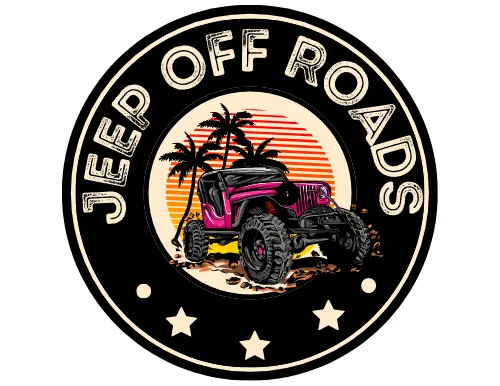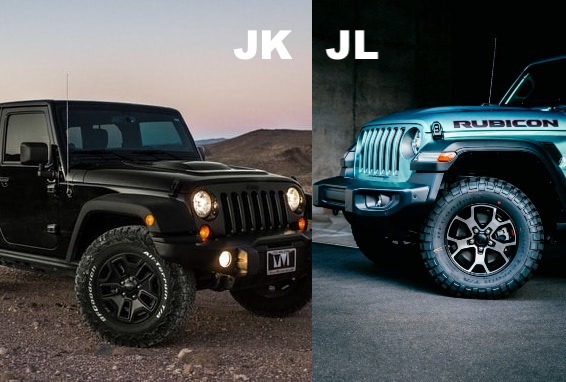Whether you are a Jeep Wrangler fan or not, it is worth knowing that the JL is the new, improved version of the old JK.
Just as it happens with any other vehicle, the Jeep Wrangler had to step up and get in line with the times.
However, is it worth making the switch from the good old JK to the new JL? In this article, you will find out all about the differences between the Jeep Wrangler JL and JK.
So you’ll be able to decide if the change is suitable in your case.
What Does JL Stand For Jeep?
JL is a double code used by engineers to differentiate the new Jeep Wrangler generation from the old generation.
Jeep Wrangler JL is the 4th generation, providing Jeep enthusiasts with a brand new body, a slicker appearance, and modern features.
The new version has been available on the market since 2017. Thus, in other words, if you want to enjoy the latest model of Jeep Wrangler, the JL is the version you need to look out for.
However, even so, JL is very similar to JK in terms of appearance, so it is possible to take one for the other. Knowing the differences is helpful in making an informed decision.
What Does JK Stand For Jeep?
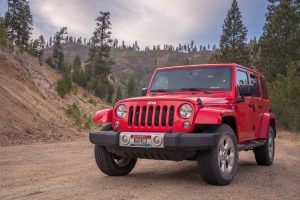
Just like in the case of JL and other Jeep Wrangler versions, the JK is a mere code used to identify the generation of Jeep Wrangler.
Of course, besides the code, there are other characteristics and features that help with the identification of the Jeep Wrangler version.
So, once again, JK stands for the generation of Jeep Wrangler, letting you know what generation you are dealing with and between which years the car was manufactured.
Available since 2007, JK models are available with two or four doors. The production of this version ended in 2018, when the new JL appeared, with new improvements for the popular Jeep Wrangler.
How To Know If My Jeep is a JK or JL?
Because the Jeep Wrangler JK was manufactured until 2018 and the Jeep Wrangler JL started to be manufactured in 2017, there was a year in which these two generations overlapped.
This is why some Jeep Wrangler owners may be confused, not knowing for sure which Jeep Wrangler version sits in their parking lot.
A significant difference is a push-to-start button available in the JL version compared to the more traditional way of starting the engine for a JK.
Also, the headlights of the JL go into the vent grille, something that doesn’t happen with a JK.
The front fender of the JL has an embedded indicator light, a feature that is absent on a JK. These are several of the most obvious differences between the JL and JK.
Differences Between Jeep Wrangler JL vs. JK
01. Engine
The Jeep Wrangler JK is equipped with a 3.6-liter V6 Pentastar engine. You can find this engine as a 5-speed manual transmission or its automatic 6-speed version.
The Jeep Wrangler JL enjoys a better, more improved version of the V6 Pentastar engine, which is available as a manual 6-speed transmission or automatic 8-speed option.
The idea was to come up with a more effective engine capable of better performance and lower fuel consumption.
The electric steering mechanism contributes further to fuel efficiency since it is not dependent on the pressure built by the engine to work, as happens in the case of hydraulic steering.
02. Weight + Tow Capacity
The weight of a Jeep Wrangler depends very much on the model, year, trim, engine specifications, and door count.
Thus, a Jeep Wrangler, regardless of type, can have a weight ranging between 2,855 lbs. (or 1295 kg) and 5,222 lbs. (or 2369 kg).
The Jeep Wrangler Rubicon 4xe made in 2021 is considered to be the heaviest, standing at the top of the list with a weight of 2,855 lbs.
Regarding towing capacity, it all stands in the engine. Considering that both JL and JK are equipped with the same engine, their towing capacity is similar.
At most, a JL and JK can tow up to 3,500 lbs. The only difference is that the JL’s engine was made to be more economical in terms of fuel while delivering an improved performance.
03. Outdoor Interior, Door, Grill, Windshield
The grill is something that sets the JL apart from the JK. So, if the JK still bears the Jeep logo on its grill, this logo is completely absent on the JL.
It is the first and most obvious thing you can check. The lack of the logo on the grill is countered by a better-contoured grill compared to the rather flat design used for the JK.
The JL has a more angled windshield compared to the windshield that can be met on JK.
Despite the aesthetics of a more angled windshield, this change is more connected to the practical side of having a reliable windshield.
During off-road adventures, JK owners complained that the windshield gets cracked rather easily by debris generated by the rough terrain.
Thus, a windshield with a greater angle will be more capable of deflecting debris and resisting the risk of getting cracked.
The JL also enjoys lighted doors since they are made out of aluminum (and so is the hood). But, apart from weight, the doors have other improvements as well.
For instance, on the inside, the armrest features cutouts. This makes it easier to remove the door by allowing you to reach and grab it through the opening of the window.
The hinges of the door were also improved. They swing open easily, not having the hinge straps that are present on JK models.
04. Exterior Interior, Dashboard
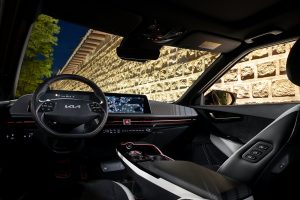
The dashboard of the JL looks and feels more modern as more technology is added to the car. Only two analog gauges can be seen on a Jeep JL, while everything else screams tech.
There are new features as well, which are not available on a JK, such as angles for decline and incline and how many miles until you run out of gas.
A touch screen is also an added feature, so much needed when it comes to modern cars.
As you can tell, there’s the possibility to connect your cell phone to the car’s computer, regardless if you have an Android or iOS operating system.
05. Bumper, Fender Flare
When it comes to the fender flare, the JL features marker lights.
In JK models, the marker lights are positioned on the grill, but in the new JL, they are taken out from the grill and mounted on the fender flare.
Also, the JL has wider fender flares, which makes it possible to use larger tires.
06. Tire, Axle
When it comes to tires, the JL Rubicon, for instance, comes equipped with a set of 33-inch tires, suitable for off-road experiences.
The new trim of the JL provides Dana 44 axles, which is a welcome improvement if we are to consider off-road sessions and tow.
This new axle is much more resilient and trustworthy when it comes to heavy-duty jobs and endurance on unpredictable roads.
07. Headlights
The headlights preserve the classic design for the JL version, although they are noticeably larger than those used for JK models.
Also, the headlights are partially integrated into the grill, as the JL features a round shape on each side, allowing the headlights to flow into the design.
This happens because the headlights are more centered for Jeep JL.
Common Problems of Jeep JK
- Steering can get sloppy after a while. This is a problem most often met in JK that has been lifted to accommodate bigger tires. The issue is, in general, given by a steering box that is worn out. This, in turn, is generated by worn parts, like ball joints and tie-rod ends.
- The track bar can crack. Again, out of the desire to lift the car, some Jeep owners choose to lift the vehicle’s chassis. This will lead to changes in the angles of the track bar and put more stress on the track bar mount.
- The arms may get weak. If the Jeep gets lifted for more than several inches, additional adjustments need to be made to avoid problems like weaker arms. This is even more important when using aftermarket adjustable control arms. Because they have parts that are cheaper, the arms won’t hold weight for too long.
Common Problems of Jeep JL
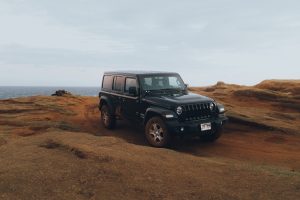
- Unreliable steering appears to be among the problems that occur most often in Jeeps JL. It may not be a severe problem, but it is still worth checking it out. After all, you need a responsive Jeep, especially when driving outdoors.
- A malfunctioning charging system or battery is another problem reported by JL owners. When the battery does not charge, or the charging system doesn’t do its job in charging the battery, the car will refuse to ignite its engine. Thus, it will be impossible to start the engine or even have the car stop completely while rolling on the road.
- A poor paint job is a complaint that arises rather often. According to some JK owners, the paint job is poorly done, with paint chipping off the car’s body, or it seems to be incomplete, with parts that are not properly covered with paint.
- The transfer case that refuses to engage can also become a problem. A leak is usually the culprit, allowing fluid to get out of the system. However, the lack of proper maintenance or even extended wear can also cause this issue.
Related Questions
Which Kind of Jeep is Better, The JK or The JL?
Considering that the JL was made to replace the JK, it is obvious that the Jeep JL is, overall, better than the JK.
Even the engine was improved so that it is more effective in terms of fuel consumption while delivering higher performances.
Of course, improvements to the interior and exterior are also obvious. The new JL enjoys a higher degree of technology, so the dashboard is much improved.
At the same time, the exterior design suffered some changes as well.
Besides aesthetic improvements, the car was made to be more aerodynamic and lighter by using materials such as aluminum on the doors and hood.
Is The Jeep JL Bigger Than The Jeep JK?
One of the things that were improved about the new Jeep JL is the space provided on the inside.
Somehow, designers managed to rethink the interior of the car, making it more spacious and welcoming.
More precisely, passengers who end up sitting in the back seat will enjoy more room for their legs. Also, the trunk is now more generous in terms of storage space.
Even the spare tire can now be bigger, considering that the Jeep JL can be equipped with bigger tires due to an improved design in the fenders.
How Can I Tell If My 2020 Jeep is a JK or JL?
The grill is the first thing to check when you’re not sure whether you have a Jeep JK or JL. It is the most obvious part that suffered significant changes in terms of design.
So, if the Jeep JK had a flat grill with the Jeep logo in the middle when it comes to the Jeep JL, the logo would be missing entirely, and the design of the grill would be rounder and more curved on the outside.
Also, the headlights of the Jeep JL are slightly integrated into the design of the front grill, which features a round indent to make them fit in an aesthetic manner.
Which Jeep Can Provide The Smoothest Ride?
The answer to this question depends on how you plan to use your Jeep most of the time.
In case you’re not that much into off-road adventures, just simply appreciate the looks of a Jeep, then the Sport version is the most suitable. On asphalt, a Jeep Sport will ride very smoothly.
If you want a Jeep that can easily tackle off-road sessions while making you and the passengers feel comfy, then the Rubicon would be a better choice.
The Jeep Rubicon has what it takes to drive smoothly on rough terrain, regardless of the weather.
Final Thoughts
Both JK and JL are good cars, although, in the end, it all depends on your needs and preferences.
While it is true that some JK may be more faulty (due to their make year), with proper maintenance, a Jeep JK can run for miles without serious problems.
However, if you’re looking for a more modern car equipped with top-notch technology, and a more aerodynamic design, then the Jeep JL is a more suitable choice.
Of course, do be prepared to spend more on a JL since it is a newer and better version.

Hello there, this is Thomas Byrd. I am a professional car mechanic who leads a team of junior mechanics in a repair and restoration shop. In the beginning, I used to work for a jeep service center as a basic worker. From there I keep learning, changed my job 2 times and now I am a professional who leads a group of mechanics. Though a have expertise in the jeep, I know very well about all types of cars. To share my knowledge and skills with others I have created this blog website. Whenever I get free time from work I give my time to my blog.
